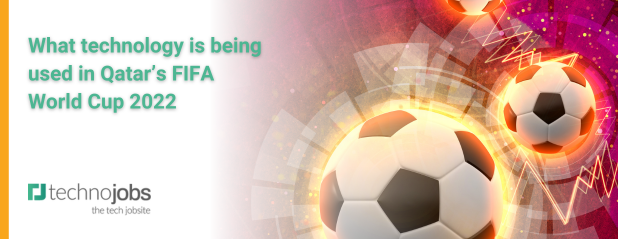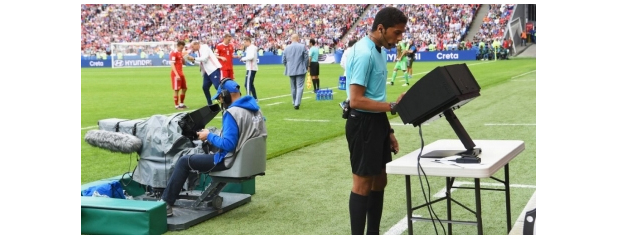What technology is being used in Qatar’s FIFA World Cup 2022

New technologies are being developed and used every day, and the sporting world is no exception, especially when it comes to football. Technology was first introduced into football in 1980 with video analysis coming into play. Coaches and players were able to watch their matches over and analyse how players move, giving them the ability to watch the game from a brand-new perspective.
Jump forward 40 years and now technology plays an incredibly important role within the game. From monitoring players’ health and abilities to in-game technology that dictates how the game is played. Some of the latest technological developments in football will be featured in this year’s 2022 World Cup including the high-tech match ball, integrated with FIFA’s new Semi-automated Offside Technology (SAOT) and an enhanced version of existing VAR (video assistant referee.)
Connected Ball Technology
Earlier this year Adidas revealed ‘Al Rihla,’ the official match ball of the 2022 World Cup. Al Rihla translates as ‘the journey’ in Arabic and it is designed to support the highest game speeds as it travels faster in flight than any FIFA World Cup ball created before it in the tournament’s 92-year history. The new ball features the latest Adidas Suspension System at its core, containing a motion sensor that tracks every touch of the game at a rate of 500 times per second. The motion sensor inside the ball will enable the collection of incredibly accurate ball movement data, which will then be transmitted to Video Match Officials within seconds throughout the tournament. This data is then used by Video Assistant Referees (VAR) for instantaneous information to help optimise decision-making.
VAR (Video Assistant Referee) Technology
VAR technology was introduced at the Russian World Cup in 2018 and was enough of a success that it was rolled out across all the major European leagues in the following years. This year FIFA has announced a new semi-automated offside technology (SAOT) which will be used at the FIFA World Cup 2022 in Qatar. The new technology uses 12 dedicated tracking cameras mounted underneath the roof of the stadiums to track the ball, as well as up to 29 data points on each individual player, which are tracked 50 times per second, calculating their exact position on the pitch. The 29 collected data points include all limbs and extremities that are relevant for making offside calls.
This data is used in conjunction with artificial intelligence, to provide an automated offside alert to the video match officials inside the video operation room whenever the ball is received by an attacker who was in an offside position. Before notifying the on-field referee, the video match officials validate the proposed decision by checking the automatically selected kick point and the automatically created offside line, which is based on the calculated positions of the players’ limbs. This happens within a few seconds and means that offside decisions are made faster and more accurately.
3D Animation
After the VAR decision has been made, the data generated by the cameras and the ball will create automated 3D animations to depict the exact position of the players at the precise moment that they were offside. The video is able to pick up the position of the player’s limbs at the moment the ball was played. This 3D animation will show the best possible perspectives for an offside situation and will be shown on the screens in the stadium, as well as being made available to FIFA’s broadcast partners to show audiences in the clearest possible way.
Cooling Technology
Off the pitch, Qatar has also been developing technologies to help players and fans keep cool in the desert climate, with temperatures anticipated to reach between 21 to 26 degrees Celsius. Seven of the eight stadiums have been built with Advanced Cooling Tech, a revolutionary technology that will keep the atmosphere inside the stadium cooled. The way that the technology works is via an energy centre near the stadium, from where chilled water is brought in by a pipeline to the venue. Once it arrives, cold air is pushed onto the field of play and spectator seating areas. The systems use insulation and spot cooling to make them as environmentally friendly as possible.
FIFA President Gianni Infantino has stated, “FIFA is committed to harnessing technology to improve the game of football at all levels,” and as new technologies are developed, technology will only continue to enhance the game. There are a number of IT and Tech jobs in the football industry from IT Support Technicians, to Developers, Analysts, and Data Engineers.

